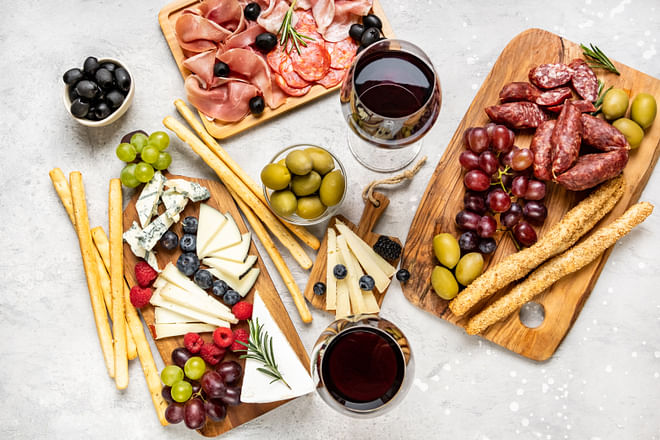Ibiza’s traditional cuisine is not particularly well known outside the island itself. This is something Ibiza shares with the rest of the Balearic islands, as the same is true of Menorca’s, and Formentera’s cooking, although perhaps less true of Mallorcan cuisine.
Ibiza’s gastronomy is based on similar principles, ingredients and preparation methods as its Balearic neighbours. However, we should not forget that the islands’ isolation from one another in the past led to the development of individual culinary traditions. In the case of Ibiza, those differences produce results well worth savouring.
Below, we describe a few of Ibiza’s most common traditional dishes. These are simply suggestions for dishes that feature on the menus of most of the island’s restaurants.
Among the family recipes used every day on the island, it is always possible to come across the odd surprise, creative dish that has been passed down through the generations.
Bullit and guisat de peix
With a few differences in terms of the ingredients added by individual cooks, both bullit and guisat de peix are Ibiza’s version of a fish stew. This dish is standard fare, not only in Ibiza, but in many towns around the Mediterranean region.
Its recipe makes the most of the fish and sea food that arrives at the markets, bringing out their potential by cooking them with potatoes in a nourishing sauce with extra-virgin olive oil, garlic, onions, parsley, saffron, almonds, etc.

In the case of bullit, the flavours of the different marine species included are transferred to the rice. Thus, bullit has become one of the most sophisticated dishes served in many of the island’srestaurants, especially those located on the coast.
Sofrit pagès
Another of Ibiza’s most traditional dishes, which is also typical of Formentera. Sofrit pagès is a truly substantial dish. It consists of two parts: on one hand there is soup, made from the stock used to cook all the ingredients, and on the other hand, the sofrit [mixture of lightly-fried vegetables] itself.
This stew is made with different meats (lamb, chicken, etc.), local cold meats (including sobrasada, a traditional cured, spiced sausage) and potatoes, and seasoned with spices such as cinnamon, cloves, saffron and paprika.
After a sofrit pagès (eaten at lunchtime, of course), a siesta is definitely called for!
Borrida de ratjada
This is, perhaps, one of the most original of Ibiza’s typical dishes. Although it is not to everyone’s taste, mostly because of the texture and characteristic flavour of the ray (ratjada), a gristly-fleshed fish that feeds on the silt on the sea bed.
The spines are removed, and the flesh is chopped, marinated in salt and lemon juice, then boiled for a few minutes. This is a way of toning down its intense flavour and making it easier to chew.
Then, the fish is stewed with chopped parsley, garlic, toasted bread and paprika, and doused with olive oil and egg.
Greixonera
This time-honoured Ibizan pudding recipe is also a good example of making the best of the culinary resources available. In fact, greixonera is a type of pudding prepared from the previous day’s leftover ensaimadas [traditional sweet buns].
The ensaimadas are soaked in a mixture of egg, cinnamon and lemon zest, and then baked in the oven in a similar way to the equally delicious home-made egg custard puddings.
Flaó
Flaó is Ibiza’s take on the traditional cheesecake. In this case, it is made with locally-produced milk (sheep’s or goat’s milk), flavoured with mint leaves, and coated with icing sugar.

Orelletes
Orelletes are basically very similar to fried doughnuts. In fact, the dough (flour, egg, sugar, anise or some other liqueur) is almost the same.
The difference is that, although they can now be found in many confectioners’ all year round, they were traditionally a gift given by newly-weds to their guests. The orelletes would be consumed after the wedding reception.
Sal de Ibiza
Salt is one of the basic ingredients in much traditional Ibizan cooking. And of course, the salt produced by the island’s salt flats is of impeccable quality. Nowadays, the salt is collected and marketed by the Sal de Ibiza brand in various forms (extra fine, grains, fleur du sel, fine grains, etc.).
Salt production is restricted to the salt marshes located in the Ses Salines Natural Park.
Frita de pulpo [fried octopus]

This characteristic Ibiza dish started out as one of the star tapas served in the island’s bars. But it has evolved to become the star dish in many restaurants and homes across the island.
The dish involves a laborious preparation process, and is cooked in several stages, the ingredients being cooked separately, then all together in the frying pan to finish. It contains octopus, potatoes, spring onions, onions and good quality peppers.
Ensalada payesa [country salad]
Totally unlike light salads based on leaves, ensalada payesa is a substantial first course based on boiled potatoes, fried red peppers, hard-boiled egg, tomatoes and cod. It is seasoned with Ibizan salt and extra-virgin olive oil.
As you might imagine, this is very much a summer dish. Although the fact is that some people eat it all year round.
Arroz de matanza [rice with meat]
This dish traditionally eaten in winter (the time of year when pigs were slaughtered) is simply a more carnivorous version of many typical Mediterranean rice dishes.
Apart from the various cuts of pork, this archetypal Ibizan dish can also contain chicken, various vegetables and even white beans.

Cuinat [vegetable stew]
This is a traditional stew eaten during Lent and Holy Week. The stew made from an assortment of vegetables. These include campion, a wild herb often used in cooking.
Cooking the ingredients is a laborious process; after it has been prepared, the cuinat is served, seasoned with olive oil, salt, chillies and a squeeze of lemon.



















































































